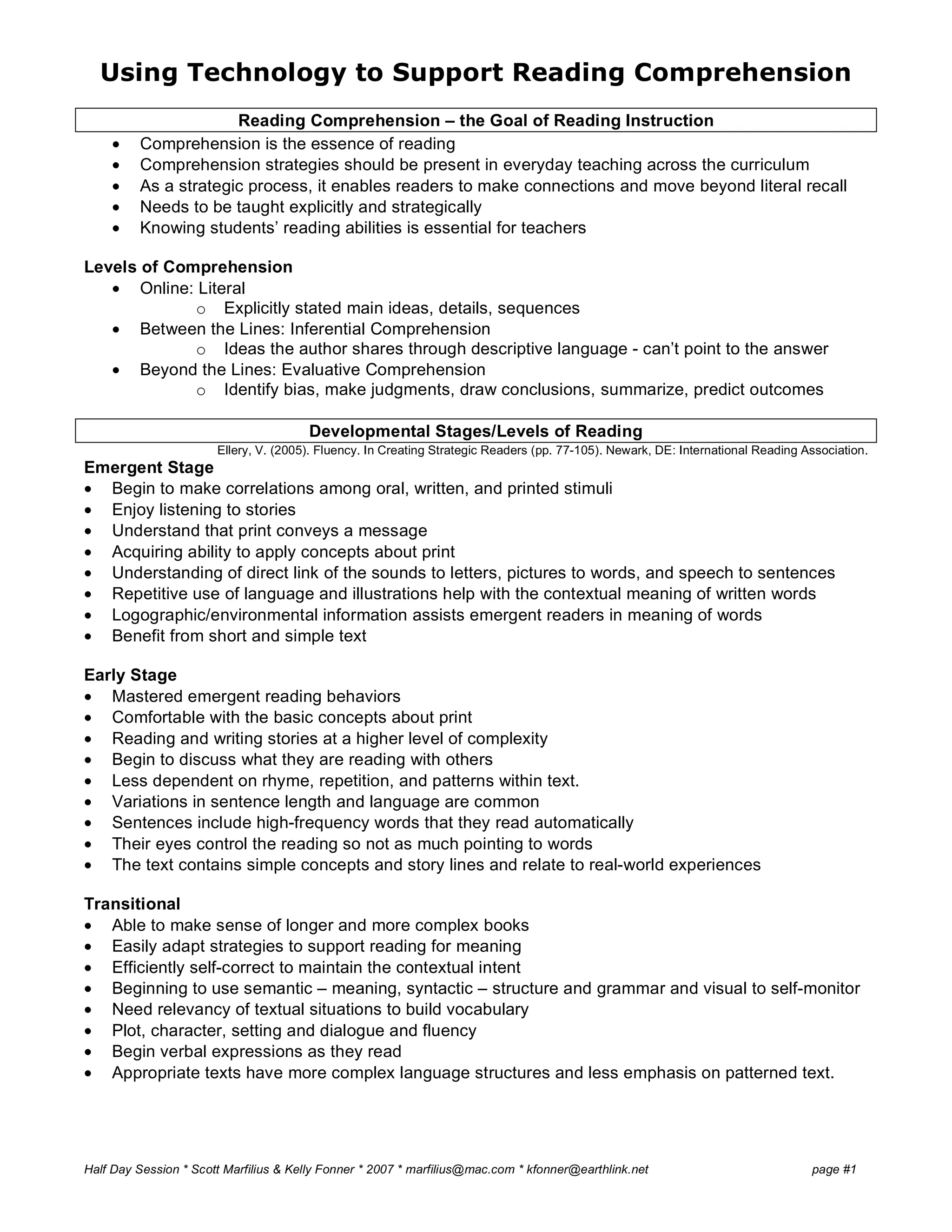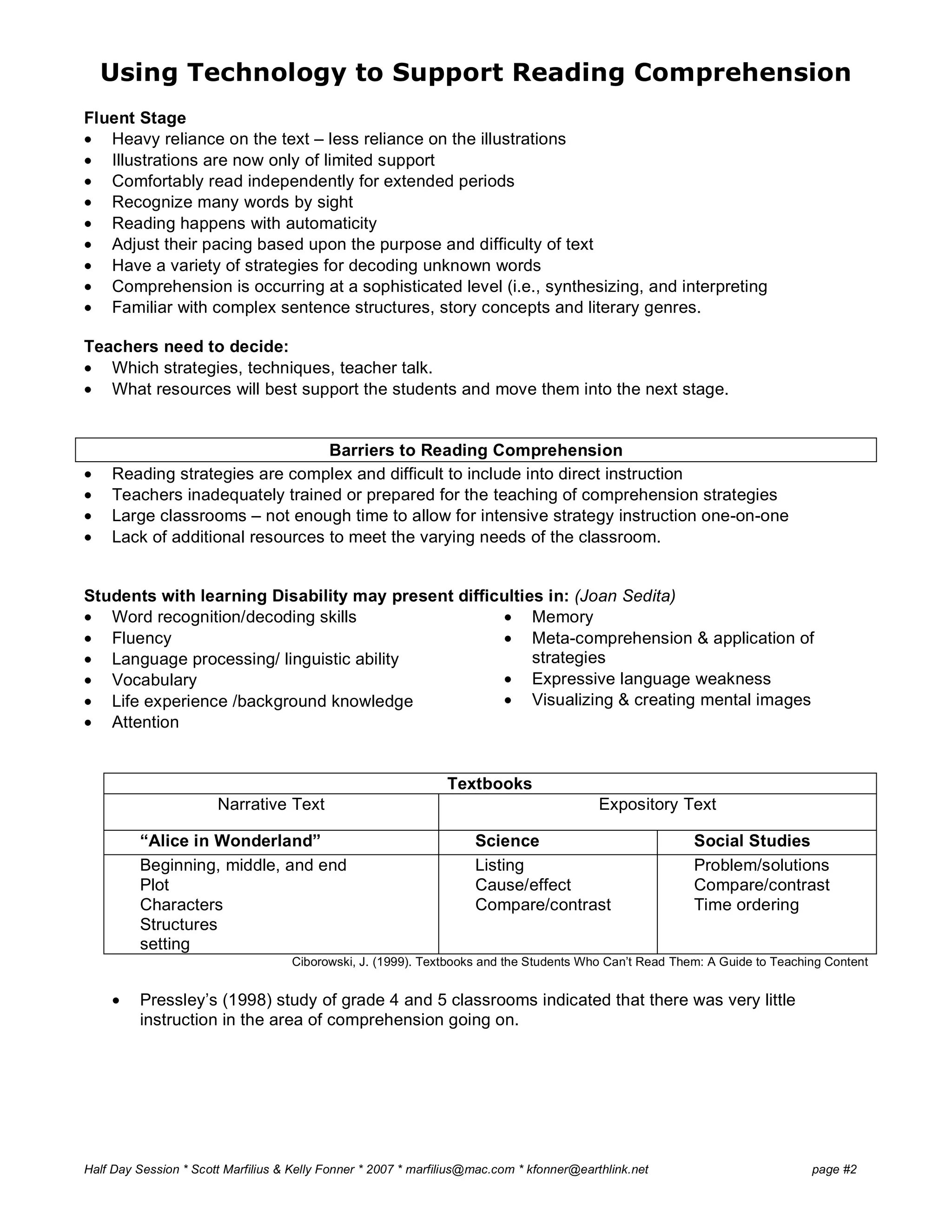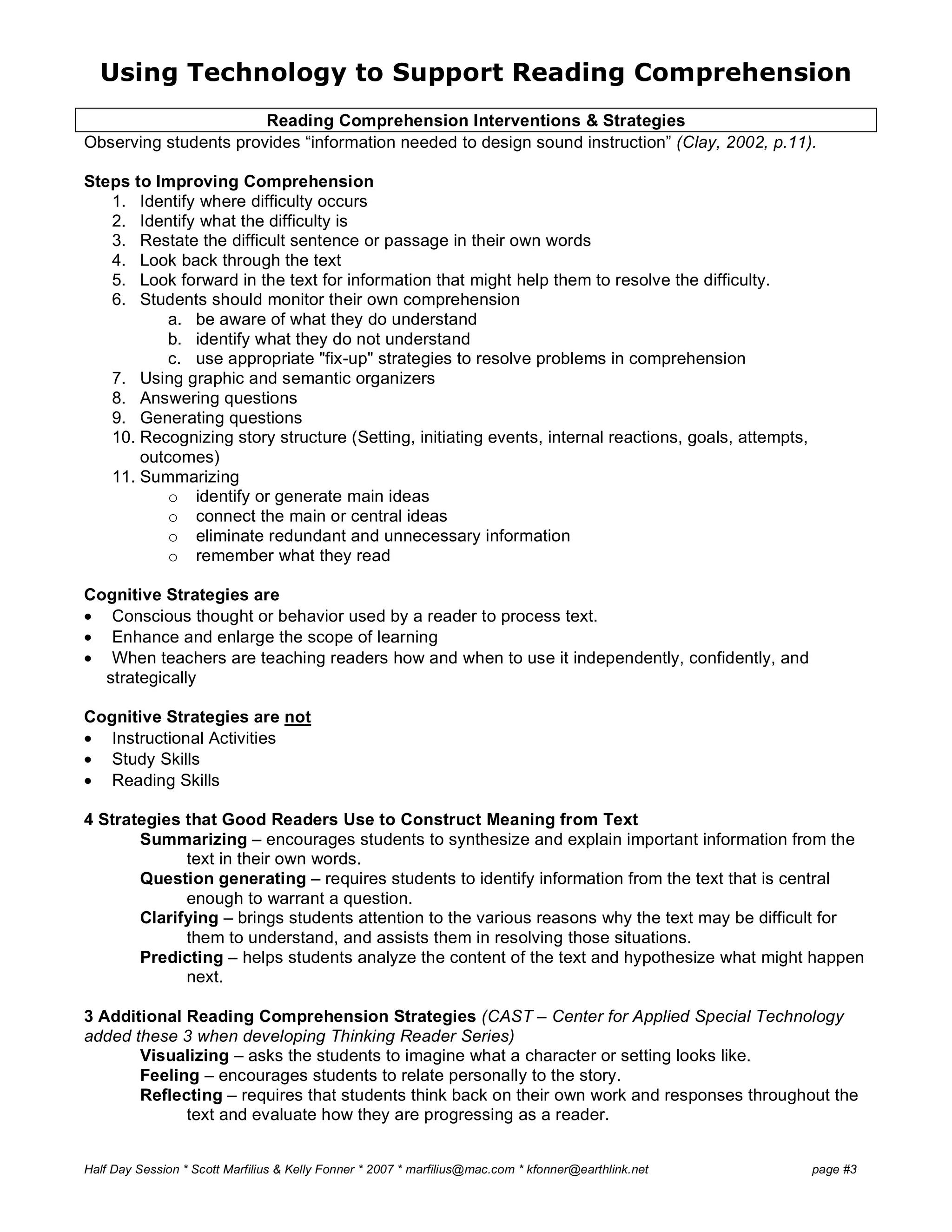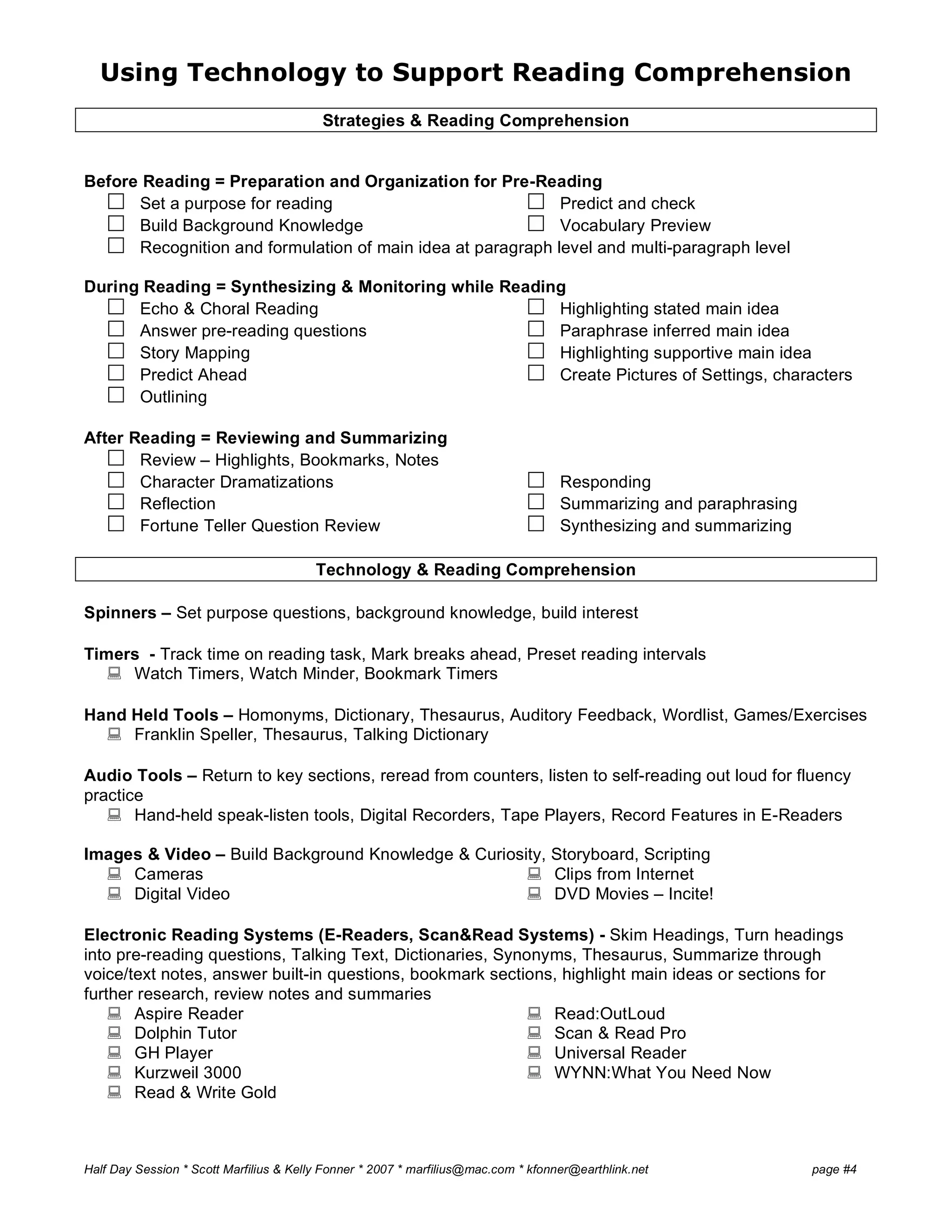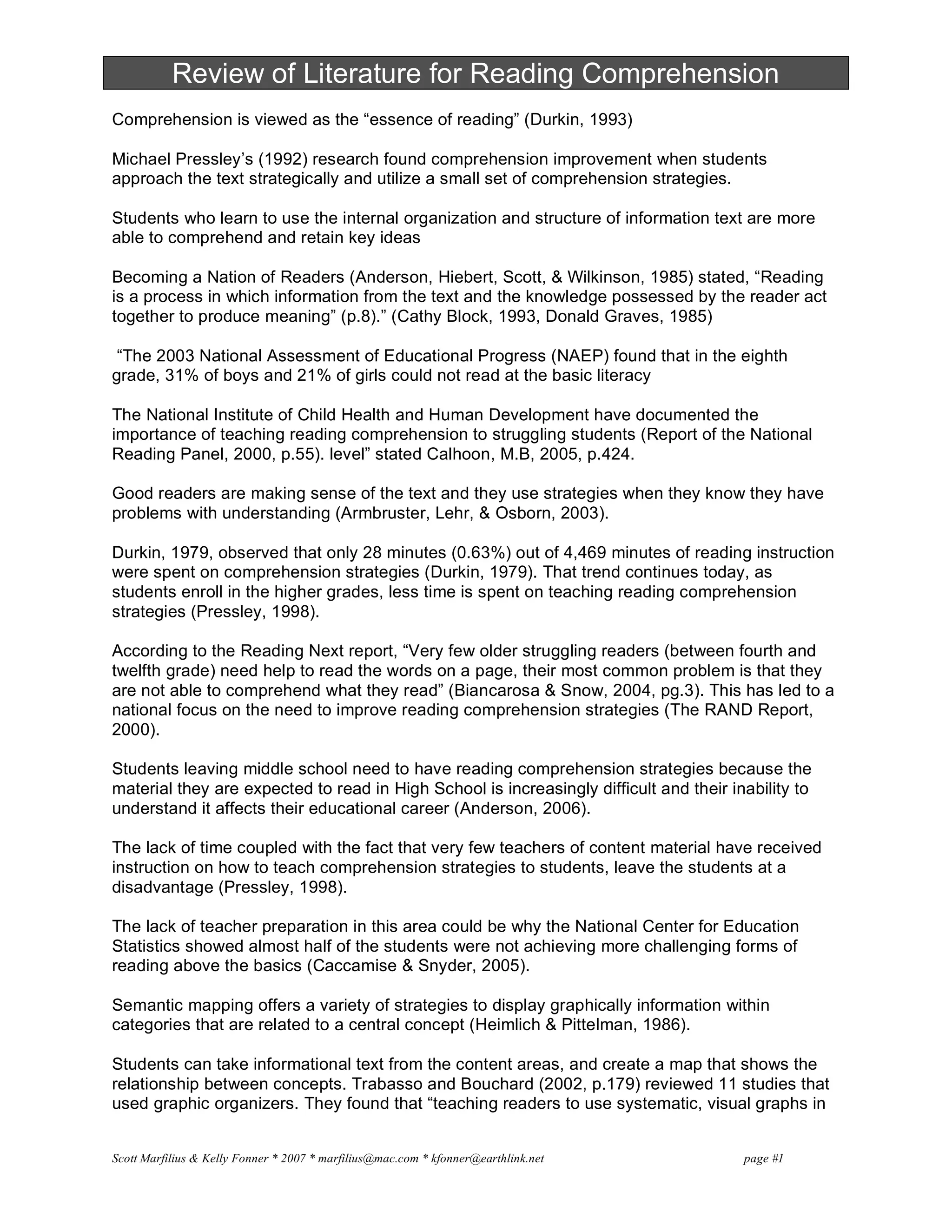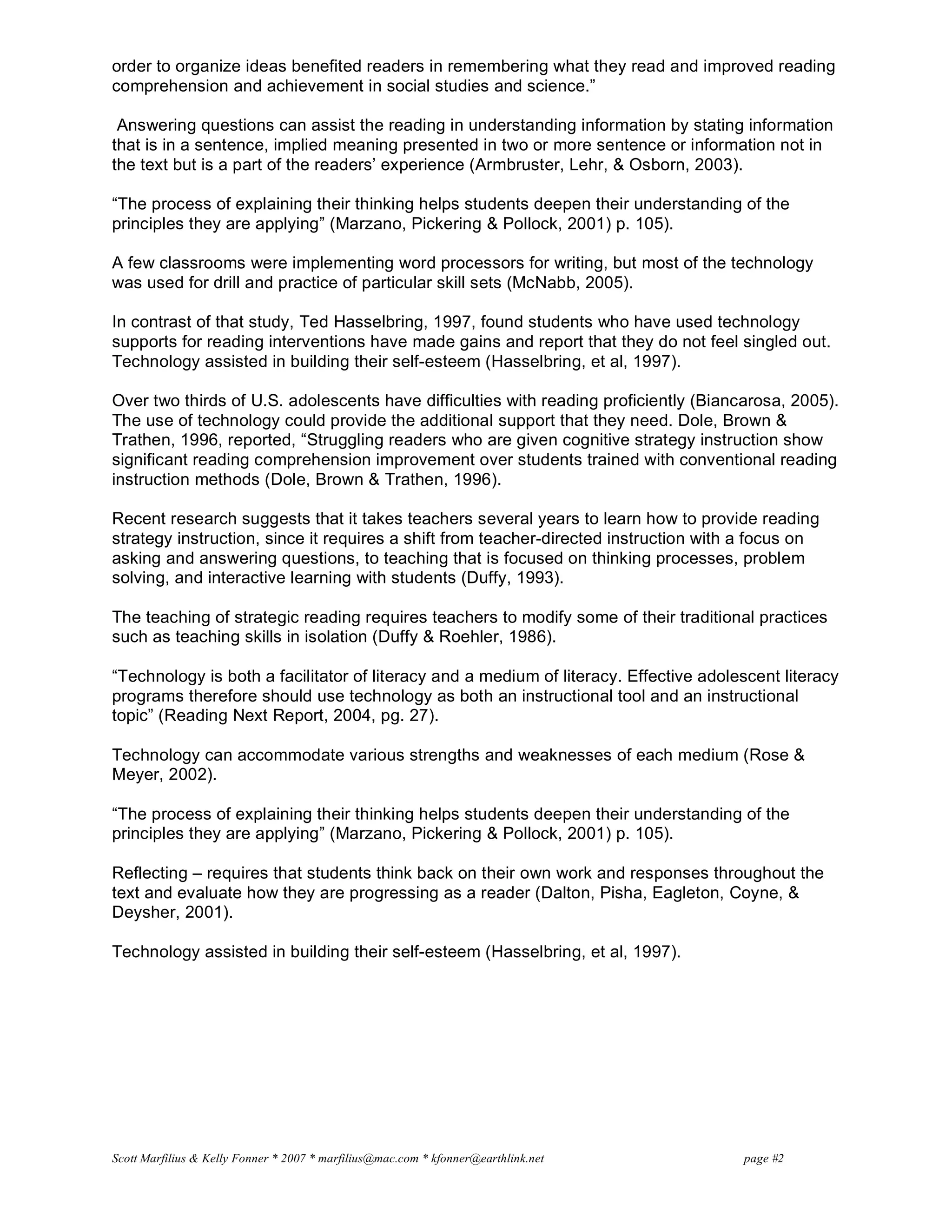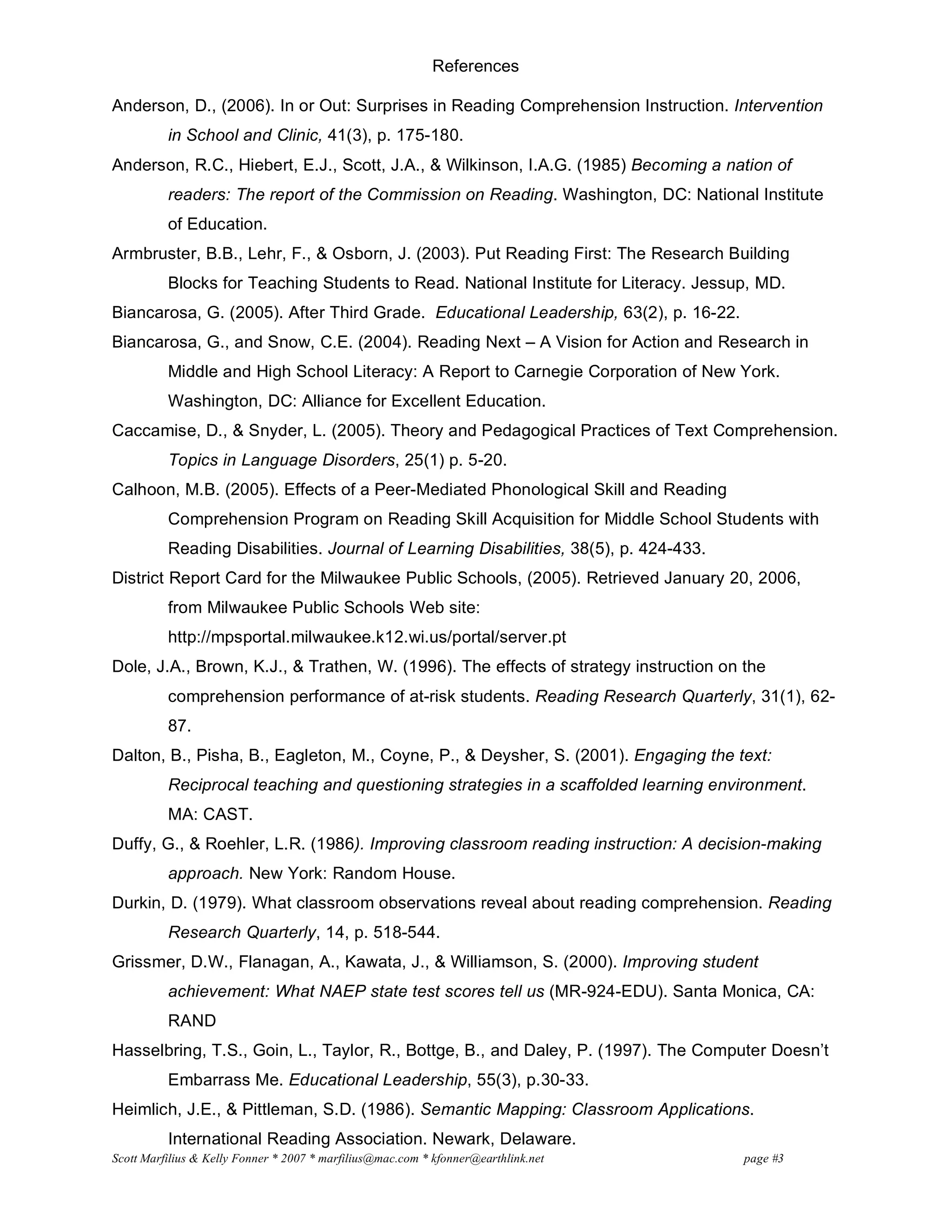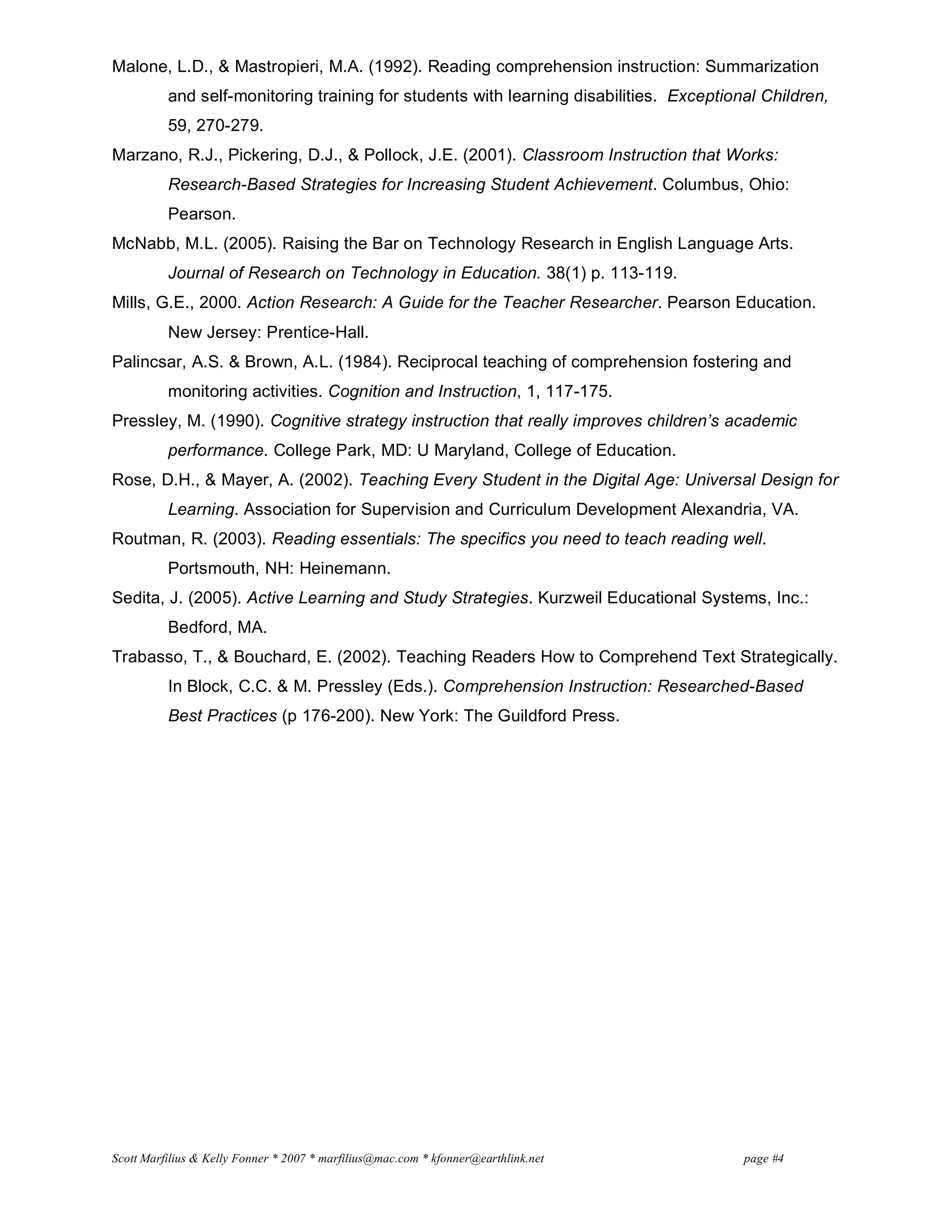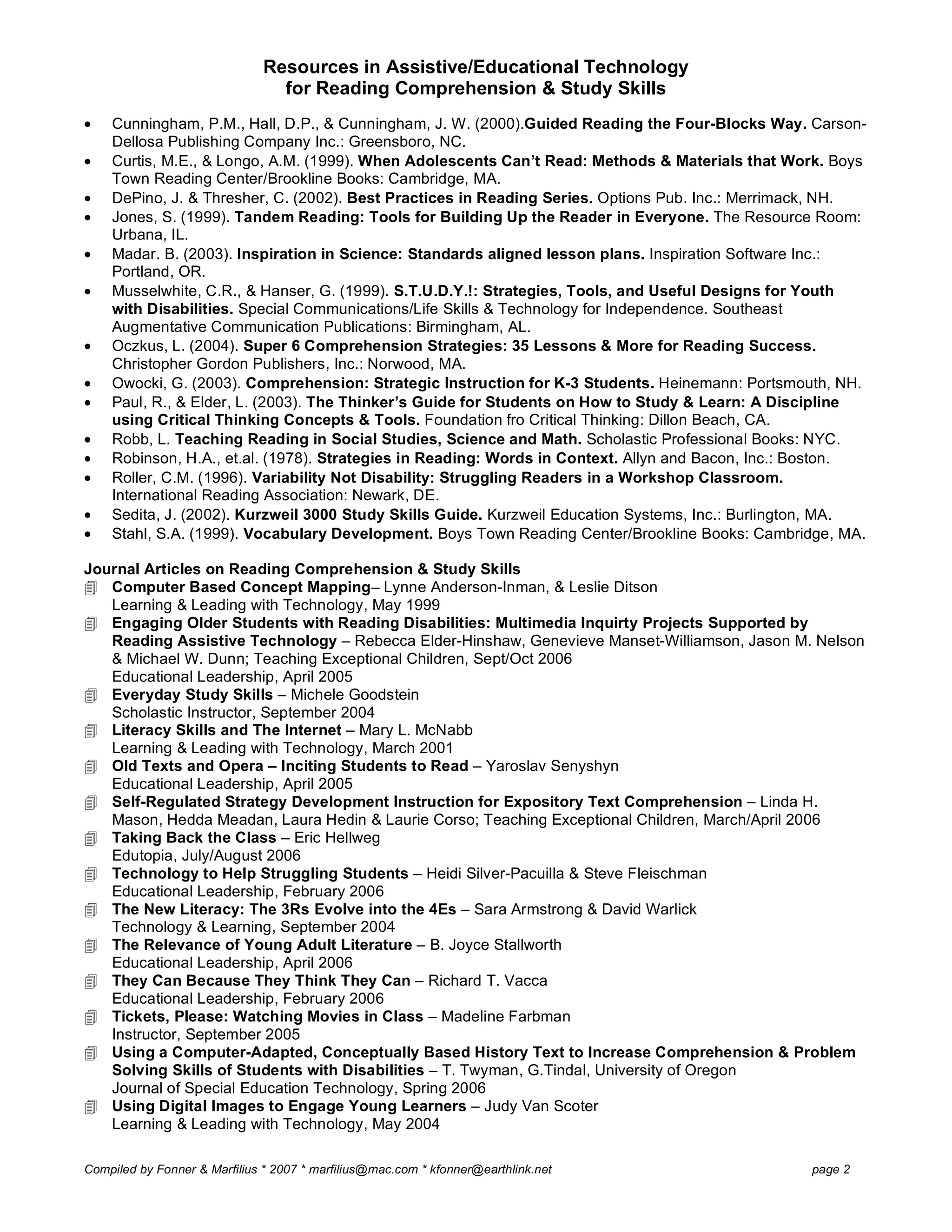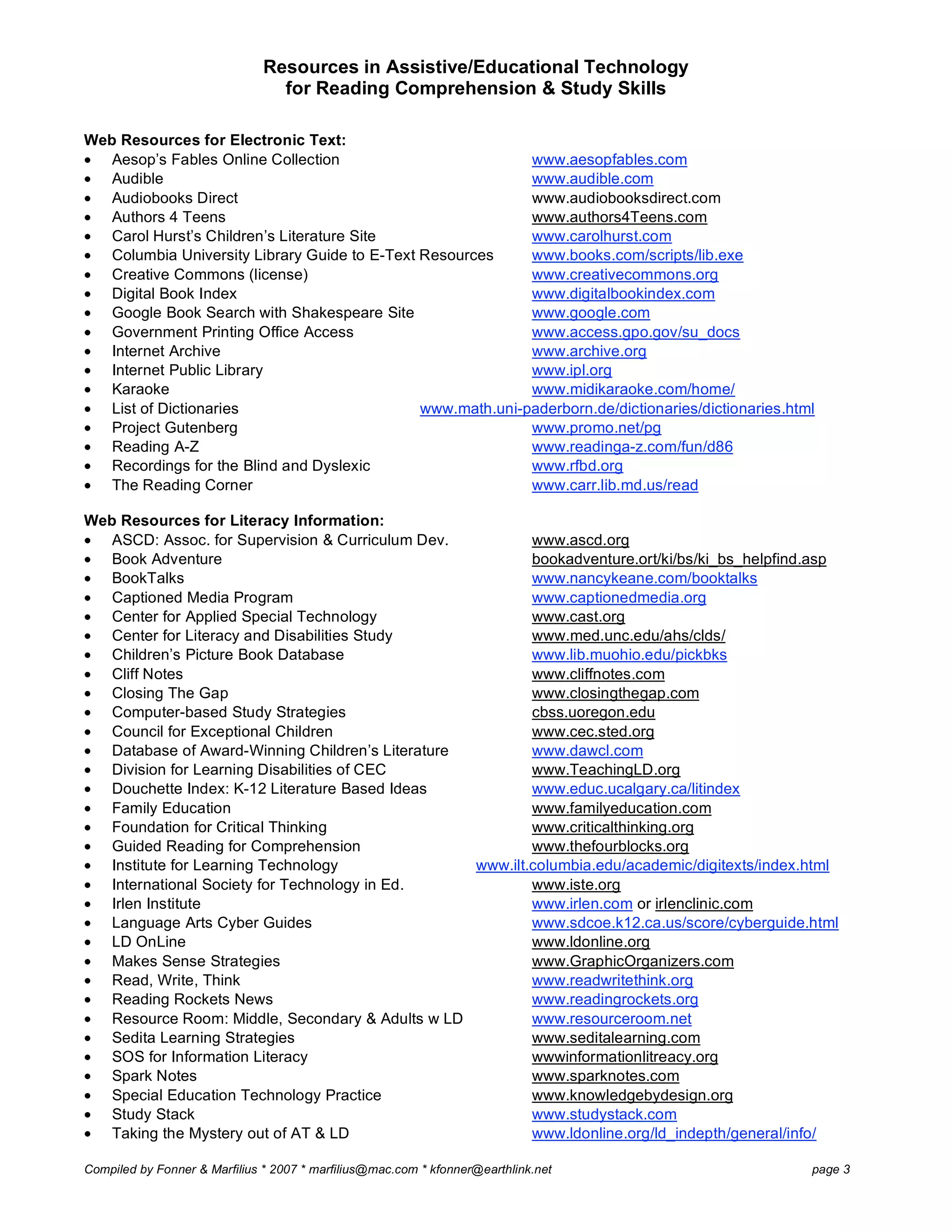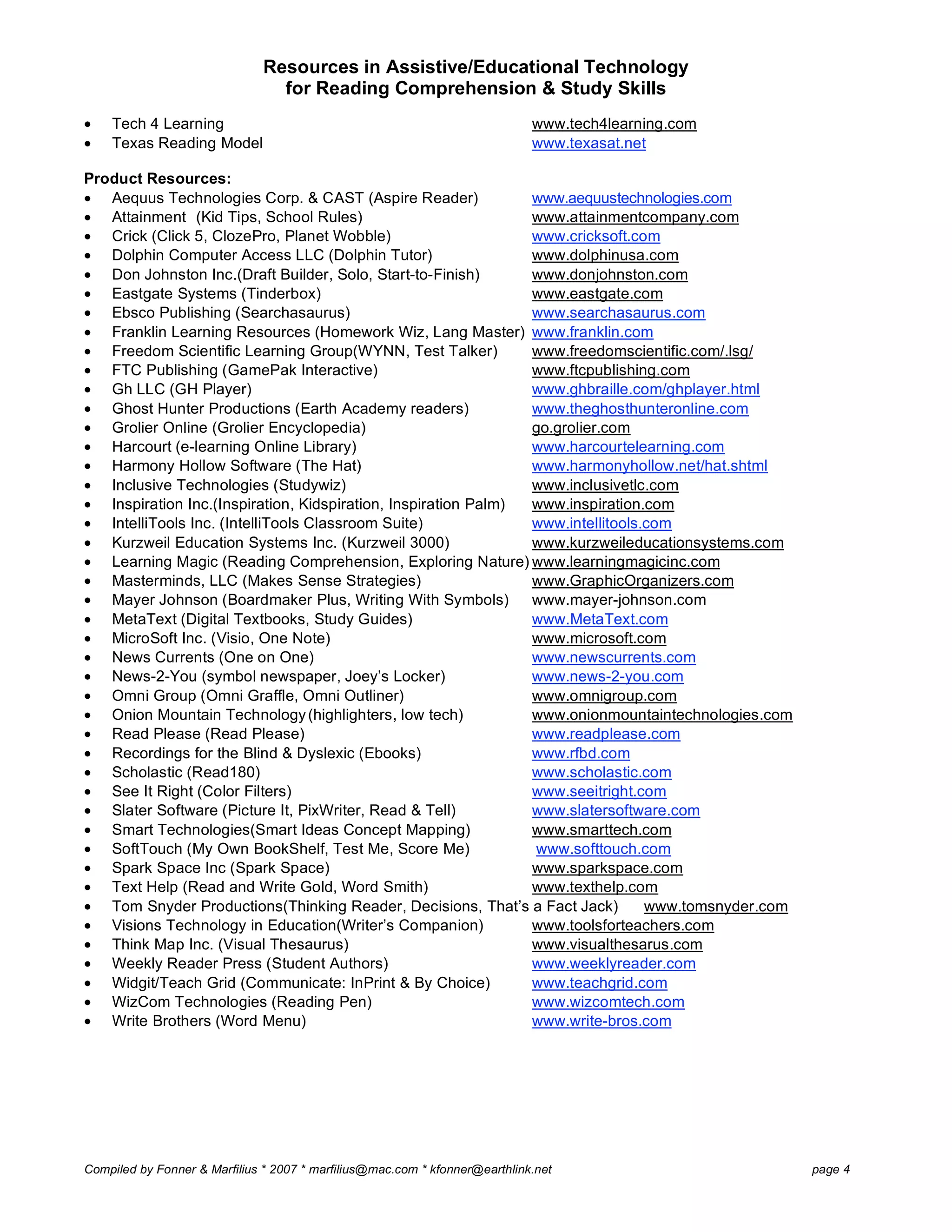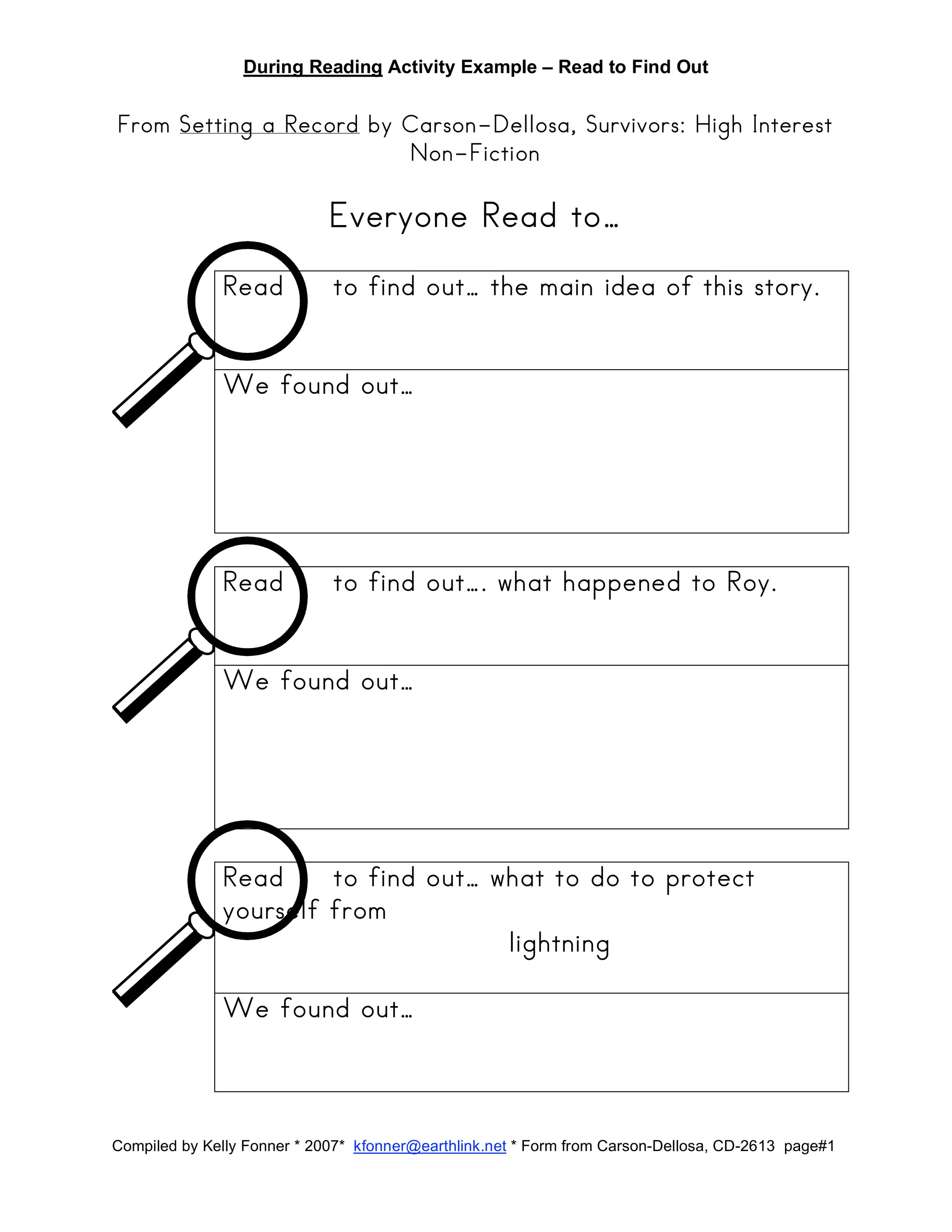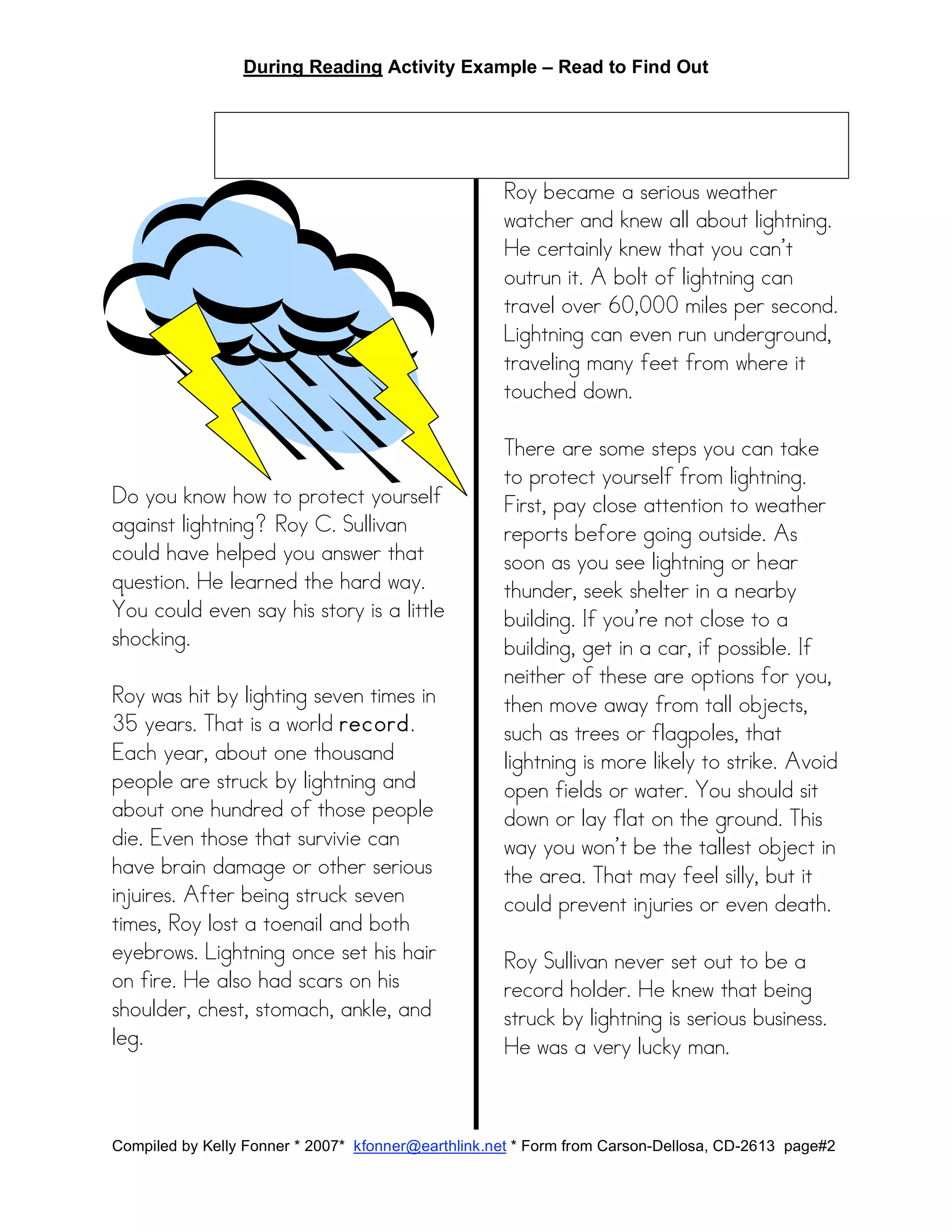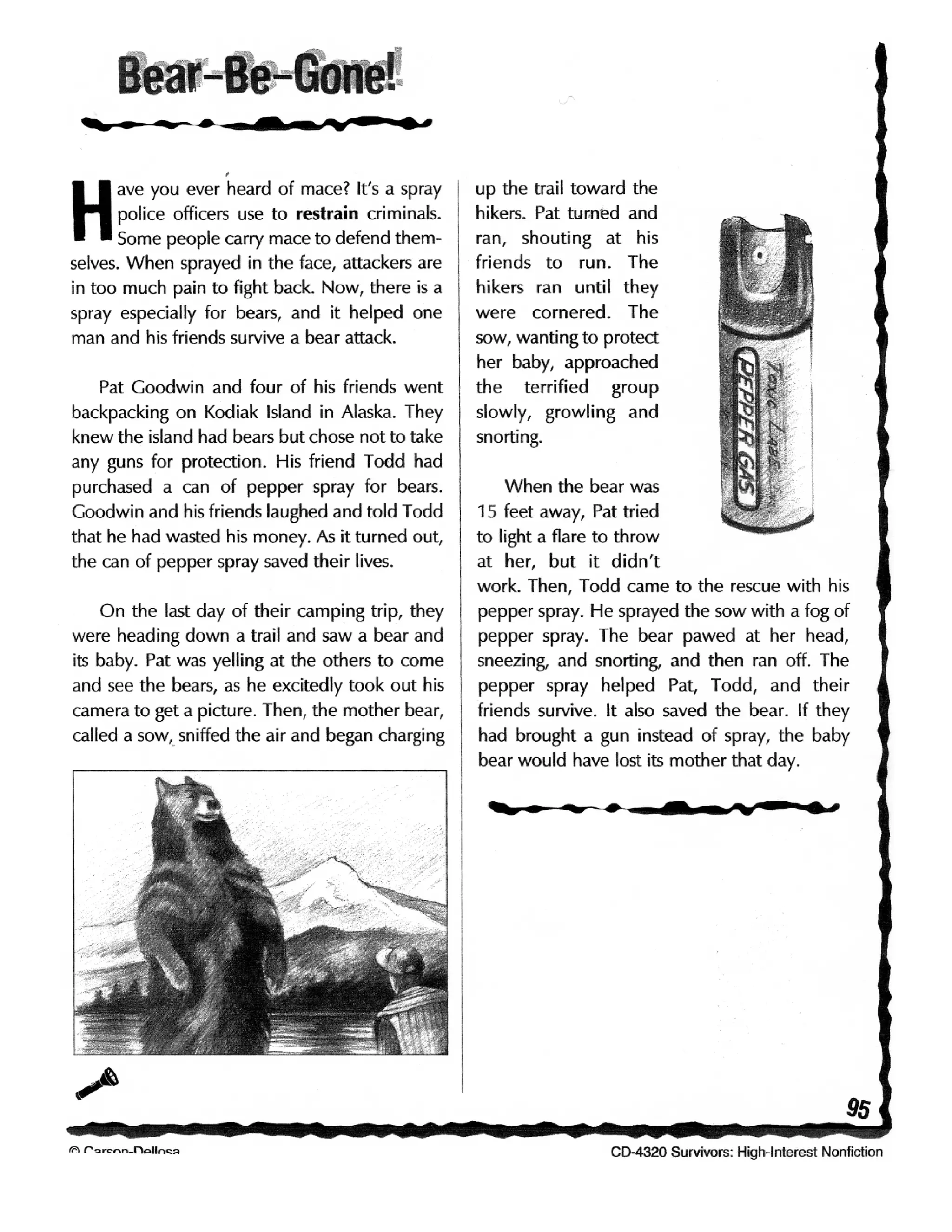This document provides an overview of reading comprehension strategies and developmental stages of reading. It discusses how comprehension is the goal of reading instruction and should be taught explicitly using strategies. Various strategies are described that readers can use before, during, and after reading, including summarizing, questioning, clarifying, and predicting. Technology tools that can support reading comprehension are also outlined, such as timers, handheld devices, highlighting, bookmarking, and graphic organizers. Barriers to teaching comprehension strategies like lack of teacher training and large class sizes are addressed.
